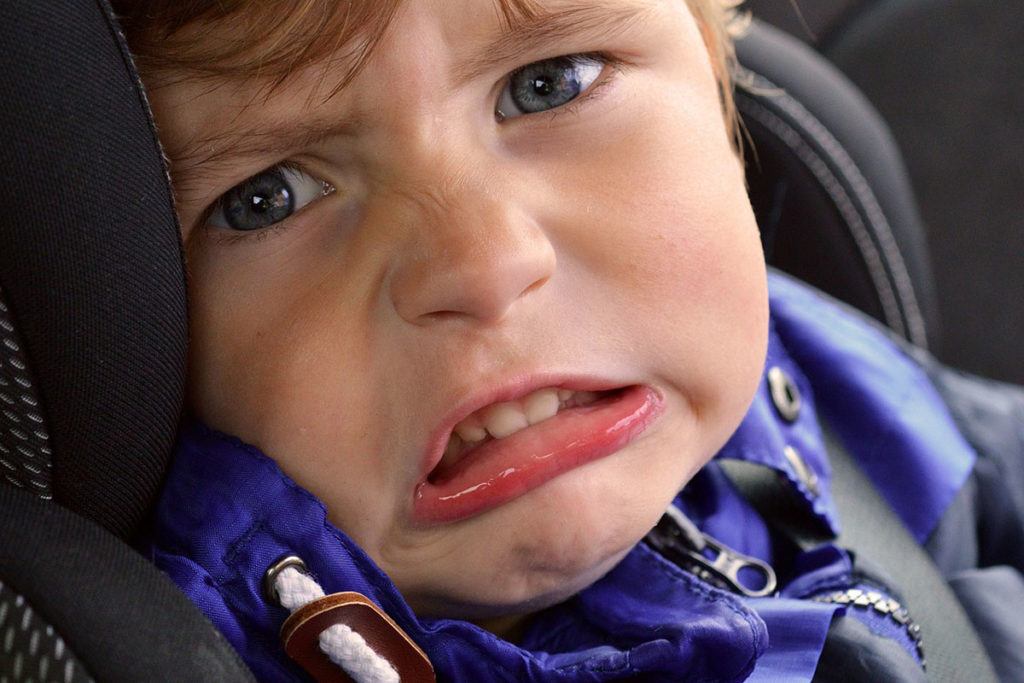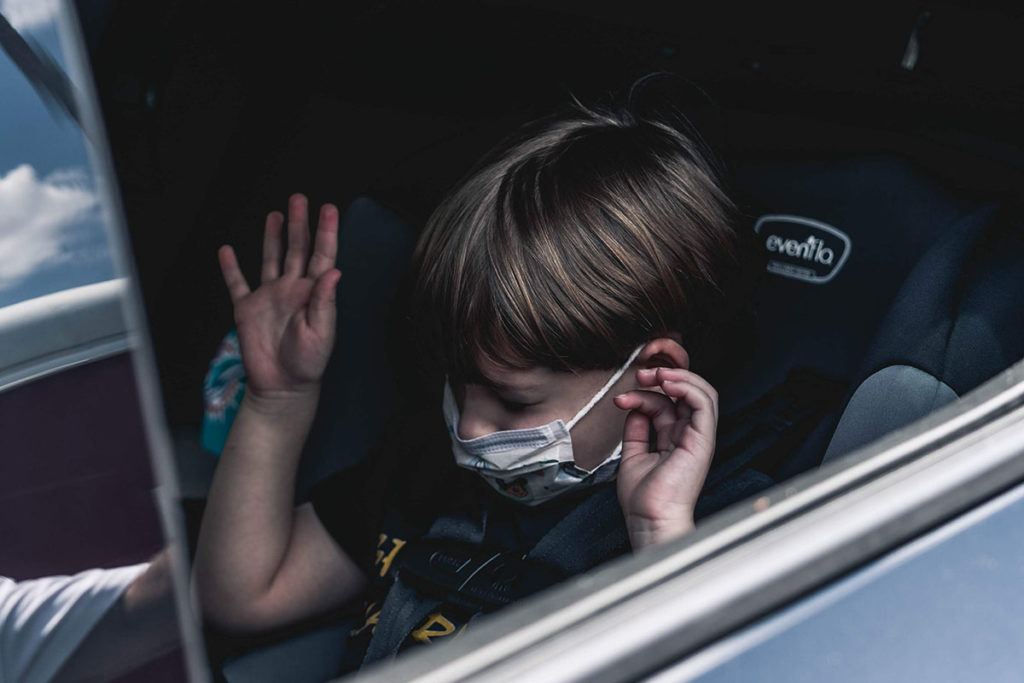Looking for a cure to toddlers with car sickness? We feel your pain!
And we’ve cleaned the seats to prove it… 🤢
Motion sickness symptoms vary from person to person, but when your child is unable to communicate their symptoms, dealing with it can become a nightmare. Whether your planned car trip takes twenty minutes or four hours, no parent wants their toddler to start feeling ill on the journey.
A few roadblocks commonly stand between parents and treating their toddlers with carsickness; in this guide, we’ll explore how to recognise the symptoms, treat, and prevent motion sickness.
Common Causes of Motion Sickness
When you’re sitting in a car, your body is stationary. You’re not doing any of the work to move, but your eyes are receiving entirely different signals — according to your eyes and inner ear, you’re moving quickly. Motion sickness occurs because of the confusion that happens in your brain and the mixed signals it is trying to interpret.
The most important body part involved in all of this is the inner ear. When your inner ear is trying to understand how to balance you, the movement you are experiencing without actually moving causes the wires to get crossed in your brain and can lead to that queasy feeling.
What Are The Signs of Toddlers With Car Sickness?
If you’ve taken your young child on a plane ride or a long car journey, they might have experienced motion sickness.
Common symptoms include:
- Fatigue
- Cold sweat
- Upset stomach and queasiness
- Vomiting
Your toddler might not be able to explain how they are feeling. They’re likely to show it by crying, becoming restless, and they might turn pale. They could also start to yawn if they’re feeling fatigued.
And, of course, stay alert for any vomiting in the back seat.

How to Prevent Car Sickness in Toddlers
If your toddler suffers from motion sickness during car trips, be prepared by following these top tips.
Be aware of what they eat
If your child ever vomits or has an upset stomach when travelling, take care with what you feed them before and during the journey.
A small, light snack such as plain crackers and a sip of water is perfect. Avoid anything too heavy or greasy.
We’ve all been tempted to stuff our toddlers with sweet treats to keep them amused on a long journey, but all that sugar can easily trigger a vomiting episode if they’re suddenly accosted with motion sicknesses.
Check the temperature & provide air ventilation
One of the easiest ways to relieve the symptoms of motion sickness is to provide fresh air. Open the windows or use the air blowers in the car as soon as your toddler starts to display signs of motion sickness.
Alternatively, use a cool cloth to bring their temperature down if they’re feeling hot. Dress your child for the weather too — layers of light clothing are best for travelling.
Reduce sensory input
Looking at a fixed point outside the vehicle can often help. Encourage your youngster to look out of the window rather than playing with toys or looking at a book.
It’s quite common for children to start to feel sick when they are watching a video or reading during travel, and the symptoms are often eased when they stop.
Seat placement
Related to the above, if possible, it’s a good idea to let travel sick toddlers sit in the middle seat, so they have a clear view out of the window ahead.
If your toddler is sitting in a rear-facing seat, it might be time to consider turning their seat around if they’re badly afflicted with car sickness. Facing against the direction of travel can sometimes make motion sickness symptoms worse.
Remember, toddlers should always travel in the back of the car for safety.

Offer distractions
If your child starts feeling sick, distracting them by offering to play games like I-Spy or playing music might be enough to help. It will take their mind off their feelings of queasiness (and make the journey more fun, too!).
Stop regularly
Break up a long car trip with frequent breaks to allow your toddler the chance to get some fresh air and stretch their legs. This will help reduce boredom too — a win-win!
Travel bands
Acupressure bands are popular among many parents, although it’s important to note that they have not been proven to work. However, there’s no harm in trying them if you have a youngster who is frequently affected by motion sickness. Sometimes the placebo effect is enough to take the edge off!
Non-prescription medication
Hyoscine is available to toddlers aged 2 years and above, and is thought to be highly effective. Consult with your GP or pharmacist if you are unsure about the suitability of certain medications.
It’s worth trying the above options first, and consider medication as a last resort.
Toddler Car Sickness FAQs
What can you give a 2-year-old for motion sickness?
There are medications suitable for 2-year-olds suffering from travel sickness – hyoscine and dramamine are popular medicated options, whereas acupressure bands and ginger are great non-medicinal alternatives to try.
What can I give my 1-year-old for car sickness?
There aren’t any medications suitable for this age group, but plenty of the suggestions above can help. Try to avoid giving your baby a big feed shortly before car or plane rides. Instead, give them a few sips to prevent dehydration and plan bigger feeds for earlier or later in the day.
Is it normal for toddlers to get car sick?
It’s more common for slightly older children to suffer from travel sickness — it’s especially common in those aged 6-12. However, it can and does affect toddlers and even babies.
How long does motion sickness last in toddlers?
Thankfully, motion sickness symptoms ease off quickly once the journey has ended. Expect your child to be back to their usual happy self within a couple of hours.

Final Thoughts
Motion sickness can be stressful for both parents and toddlers and can spoil a holiday before you even arrive.
Thankfully, it’s quite easy to prevent with or without medication. Something as simple as opening the windows and taking away toys and games can often be enough to ease the symptoms of car sickness and ensure the family has an enjoyable journey!

